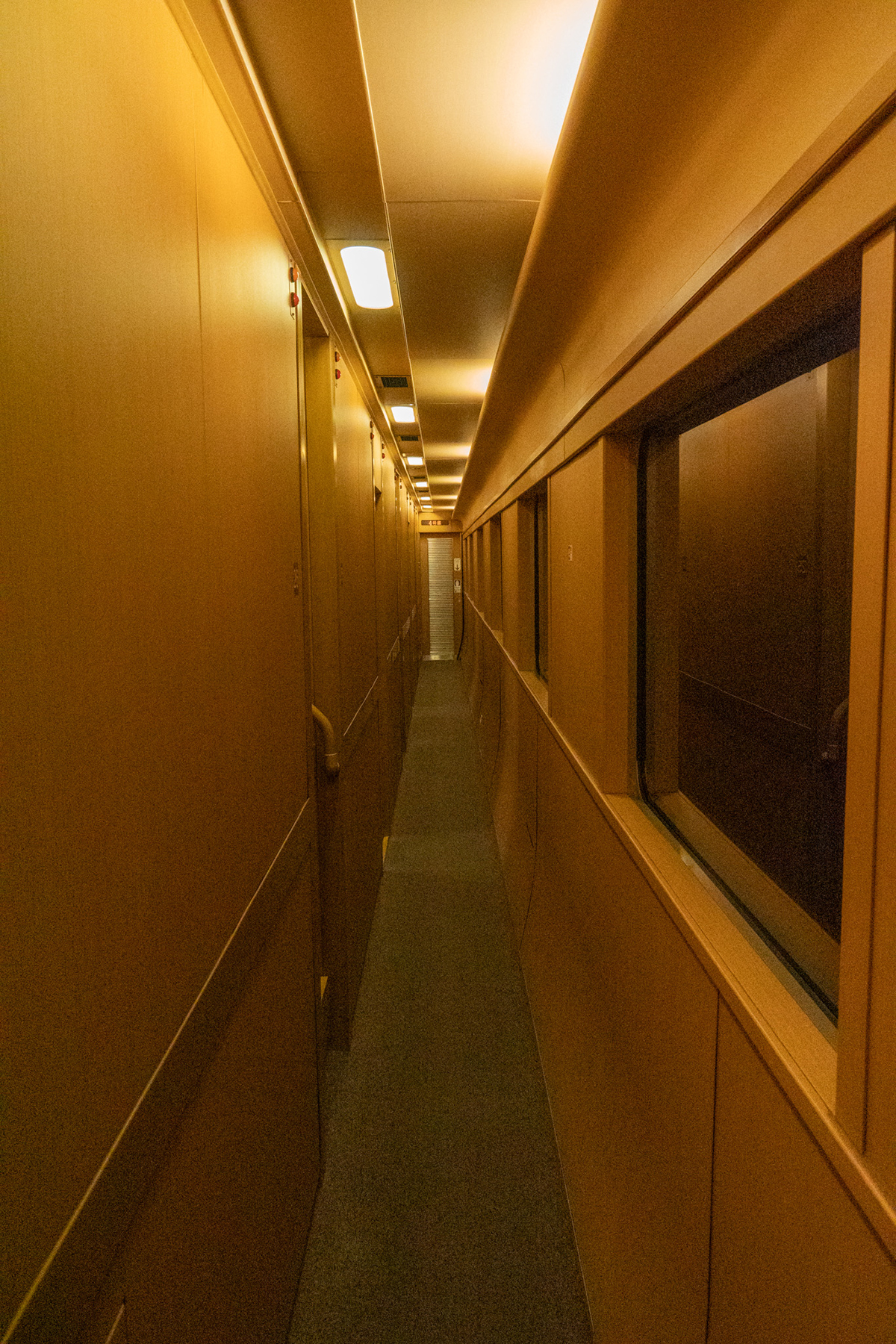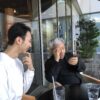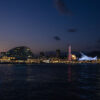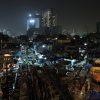Lights in Izumo, Illuminating Cultural Values 2023.11.22-11.24 Masashi Kurobe+ Yuta Shibata
The Izumo region has a long history and culture since the establishment of villages in the Yayoi period and the birth of Izumo Province. The Iwami region is a port town with hot springs that has existed since the Middle Ages including the town named Yunotsumachi which was developed as an outer port for the Iwami Ginzan Silver Mine, which is registered as a World Heritage site. What kind of light you can find in these two areas where rich history and culture of Shimane Prefecture remain? Can lighting enhance their cultural values? We investigated the light environment as well as the cultural background.
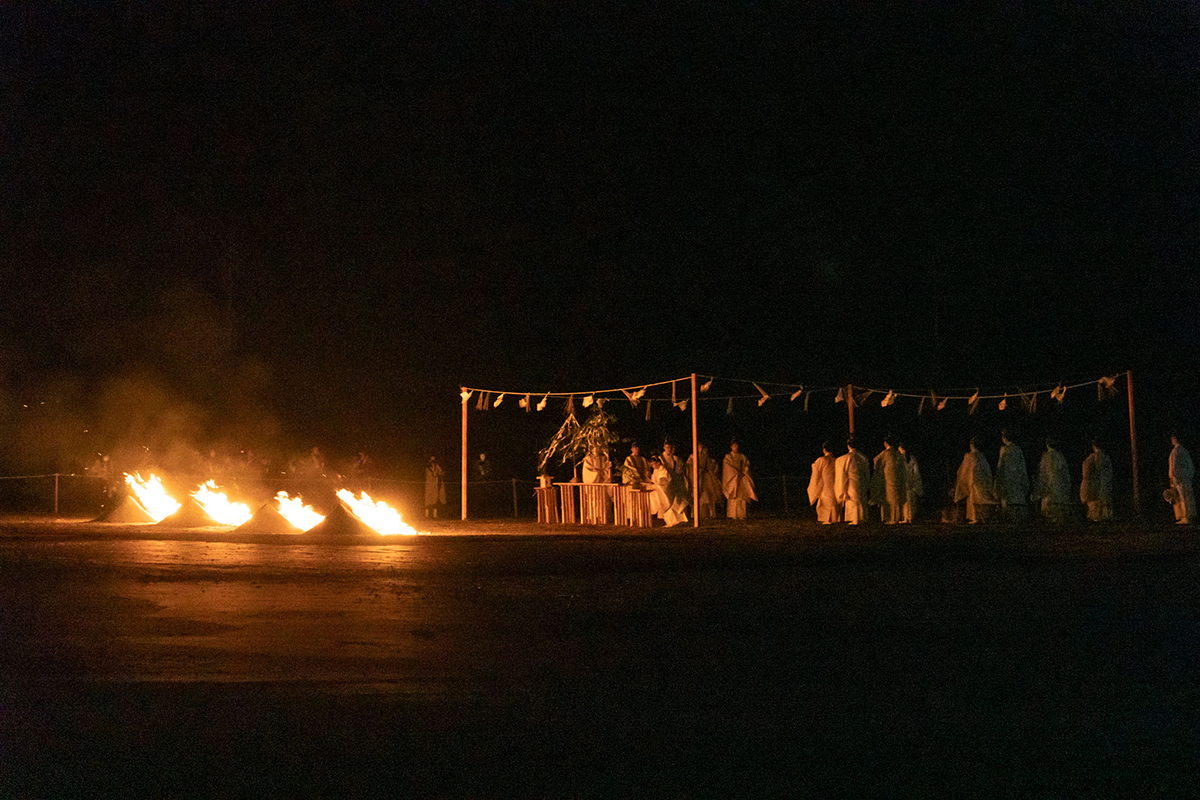
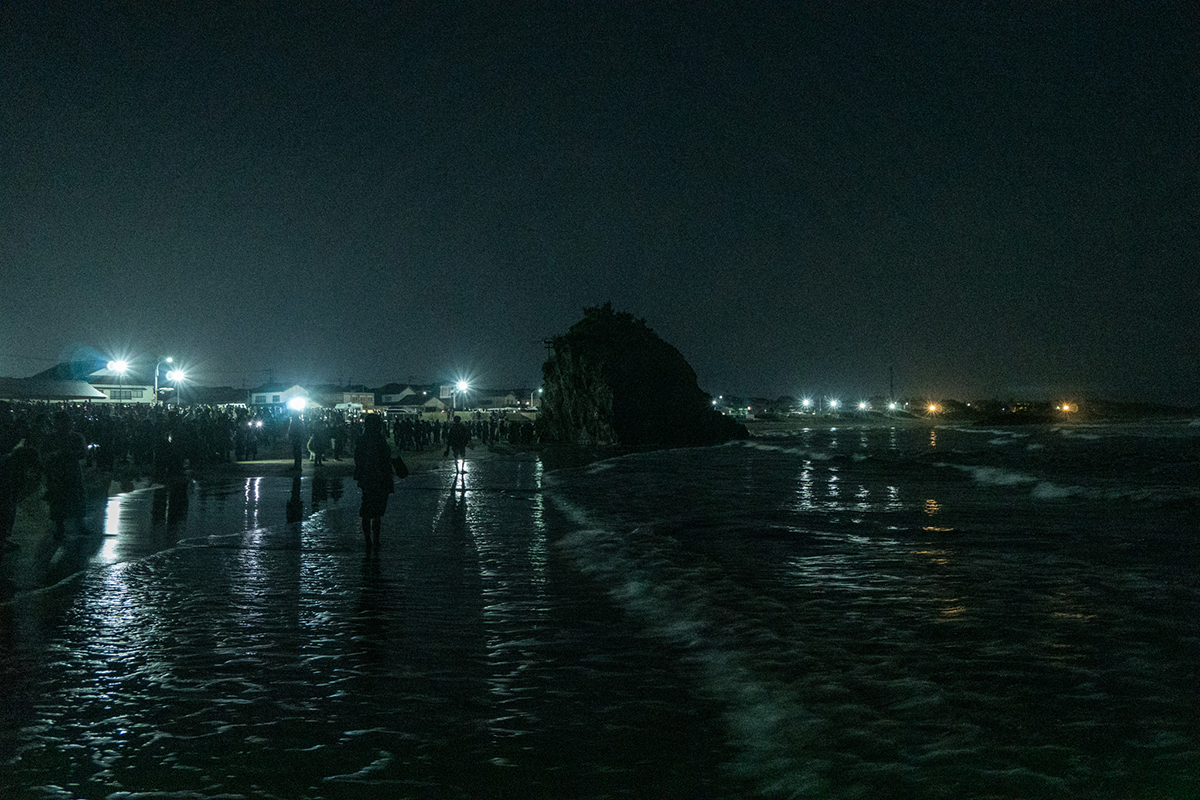
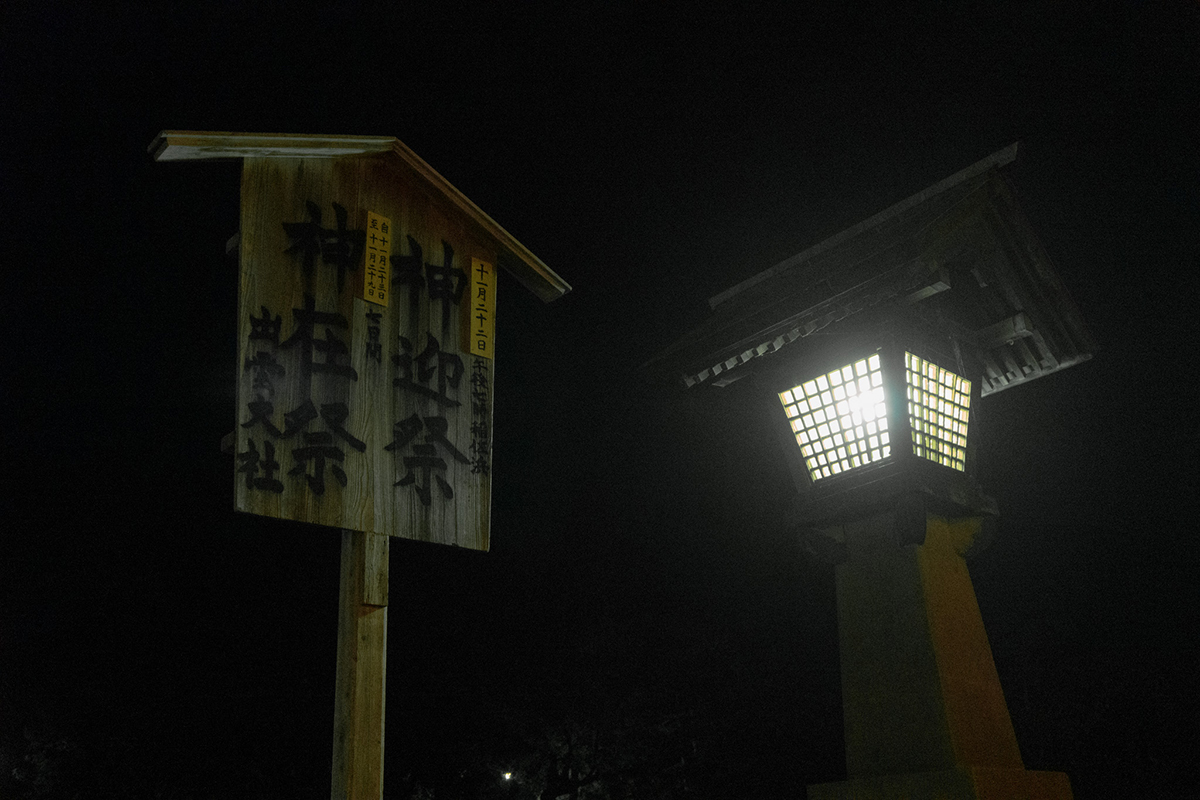
■Introduction The towns of Izumo and Iwami Yunotsumachi in Shimane Prefecture have a long history and a variety of cultures since the birth of Izumo Province. We investigated what kind of light can be seen in the spark of the culture, as well as its historical and cultural background. This survey also made us, who have lived in cities for a long time, think about the role of lighting as it should be.
■Kamimukae Shinji (Shinto ritual for welcoming the gods) October of the lunar calendar in the Izumo region is called “Kaminazuki” month. This is because during this month, all gods and goddesses from all over Japan gather in Izumo. A sacred fire is lit in the evening to welcome the gods at Inasa-no-hama beach, located 1km west of Izumo-taisha Shrine. The entire beach was dimly illuminated by several temporary floodlights that were aimed at Bentenjima. When the ceremony began at 7:00 p.m., people stopped talking and the sound of rippling waves and drums echoed through the air. Many people lined up from the shallows to the beach and shore, staring at the sacred fire about 50 meters away. We, too, kicked off our shoes and gazed at the fire from the ocean side. The flames, shimmering strongly in the sea breeze, tinted the wet beach with warm colors, and we all just stared at it with both tension and tranquility. The scene was perfectly solemn to welcome the gods. The light of the blazing flames was a like a lighthouse for the gods coming to Izumo. There was a sacred light, detached from functionality.
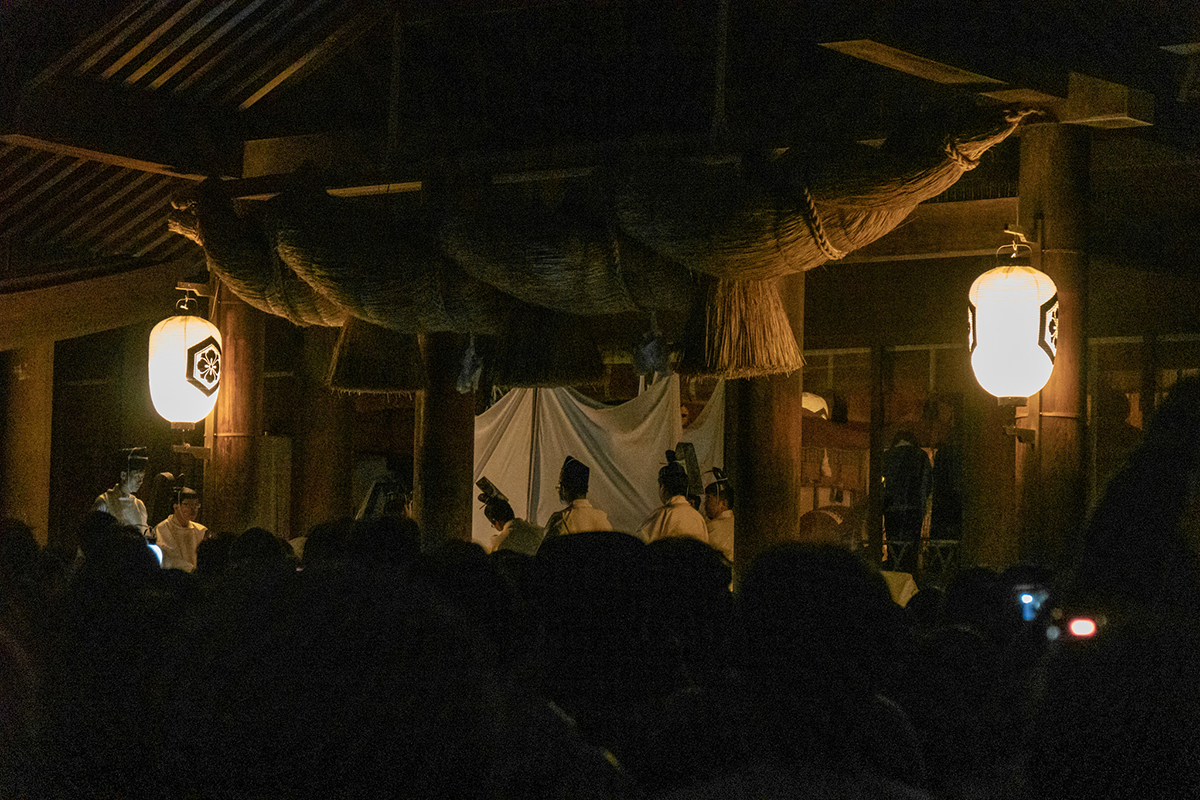
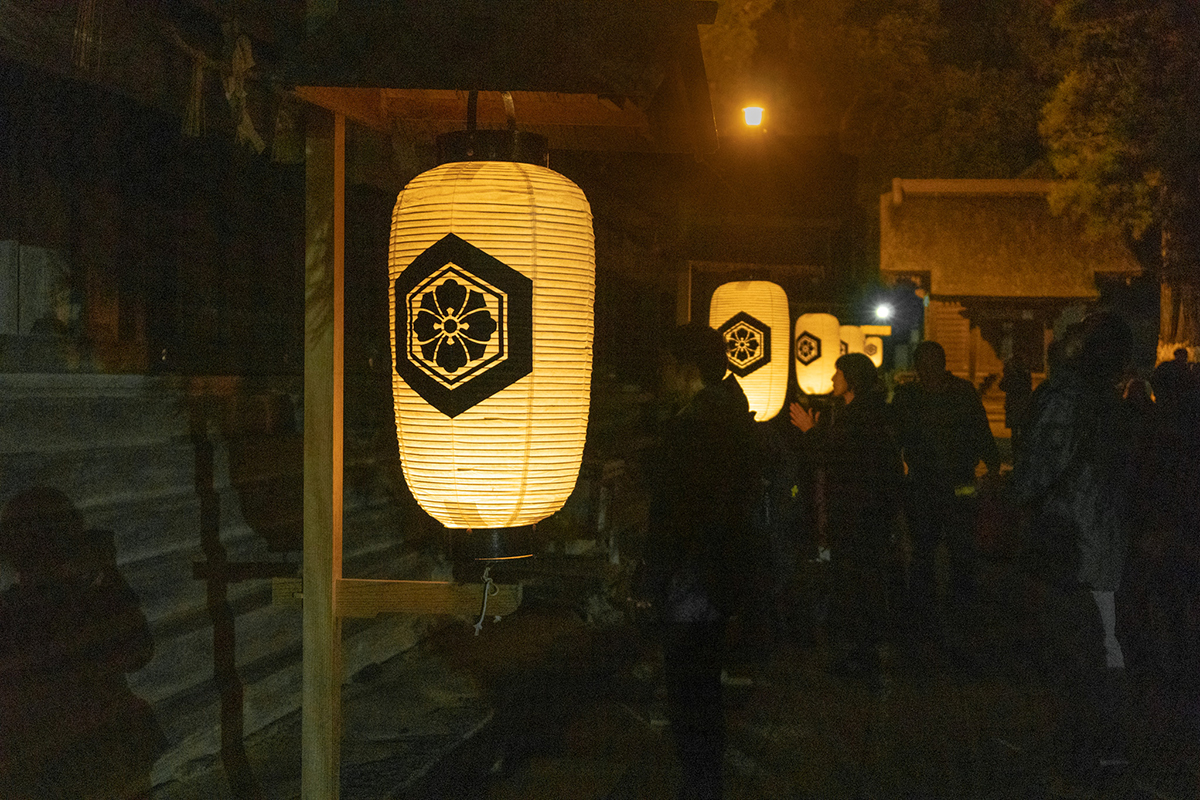
■Kamimukae Festival
After welcoming the gods, we moved to the Izumo-taisha Shrine worship hall, then “Kamimukae Festival” began. The gods were covered with a white cloth, so it was difficult to see what they looked like. The only lighting was from two lanterns on either side, which gently illuminated the oshimenawa rope, bringing out the shadows. To our eyes, it seems as if the Shinto priest is communicating with the unseen world, and the lanterns are the medium that connects the it to ours. The festival was so solemn and tense that I hesitated to even take pictures.
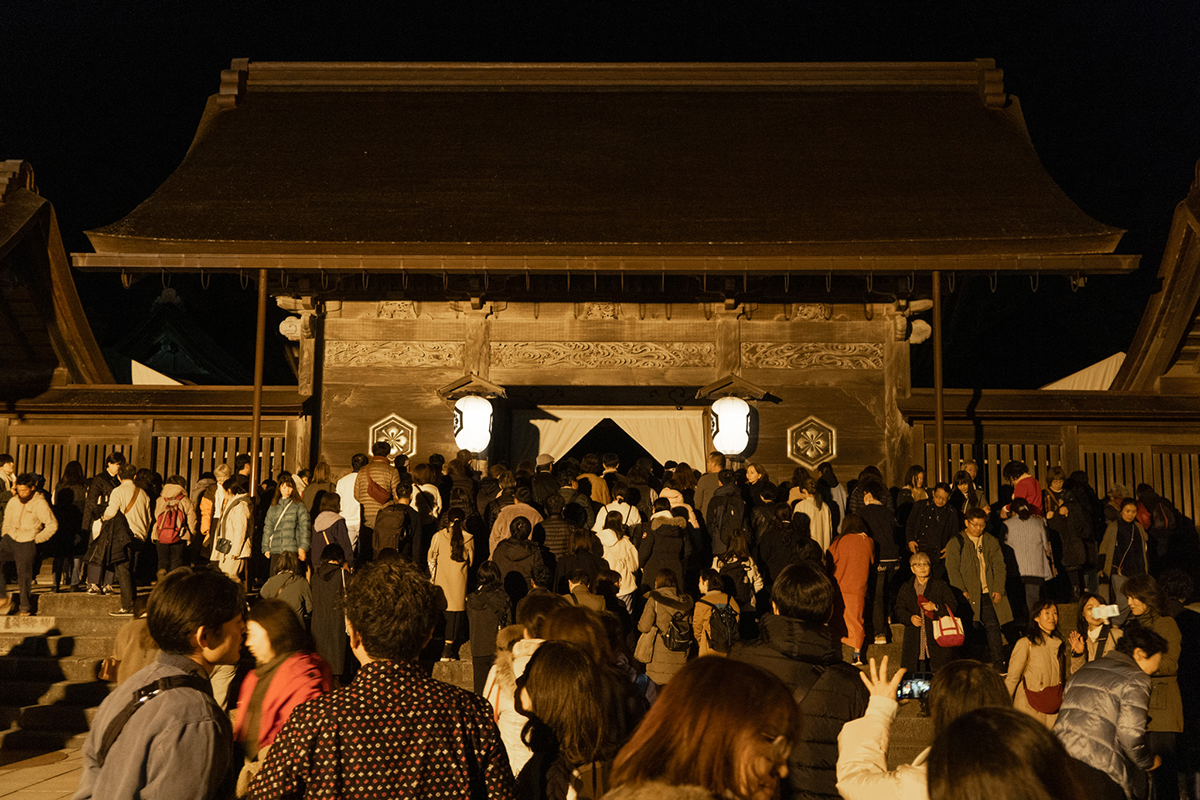
■Kamihakari
After the Kamimukae Festival, the gods are divided into two groups: those enshrined at shrines located east of Izumo Taisha and those enshrined at shrines located west of the shrine, and they stay for 7 days at the “Nishi-Jukusha” and “Higashi-Jukusha” located on the west and east sides of the main shrine. It’s said that during this period, “kamiahakari” (matchmaking) is held. There was a big difference in brightness between the Jukusha in the east and west. The Nishi-Jukusha(west) were so dark that visitors’ faces could not be recognized by the lanterns alone. The Higashi-Jukusha(east) were brightly illuminated by floodlights attached to pole lamps in addition to the lanterns. As expected, many worshippers seeking a blessing for marriage gathered at the brighter Higashi-Jukusha. I don’t think there is a clear intention, but I think it is good to have both bright and dark places, as there are many different types of connections between people. The main shrine and Sakura-mon Gate were crowded with people, a complete change from the sacred Kamimukae Festival that had just taken place there.
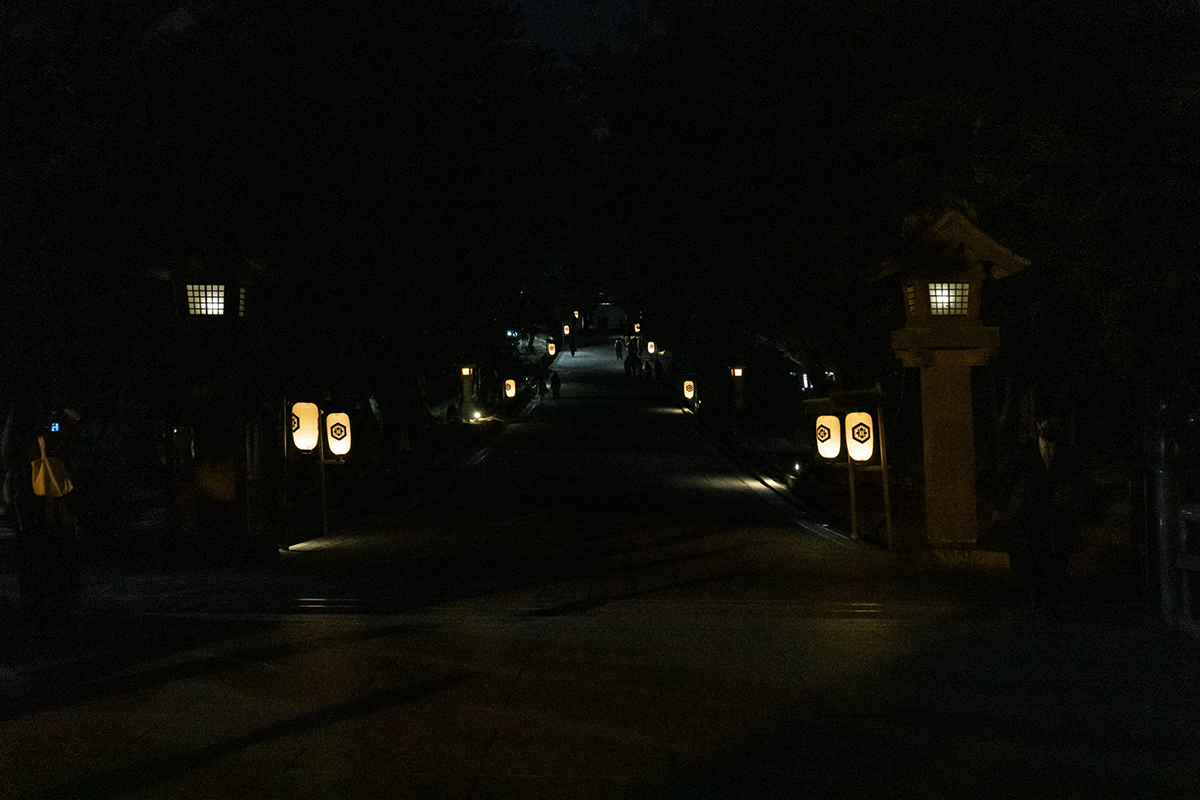
The somewhat tense “Pine Approach” to the temple, proceeding in the sacred darkness with the aid of a few lights
■Matsuno-Sando After exiting the grounds of the shrine, the “Pine Approach,” which is the pathway for the gods, continues in a straight line. Walking in the center of the path is prohibited because it’s only for gods . We left Izumo-taisha Shrine relying on the small lights of the lanterns and footlights set up at both ends of the path. (Yuta Shibata)
■Yunotsumachi The town of Yunotsumachi developed as an outer port of Iwami Ginzan Silver Mine. The land was carved out of the valley of the surrounding mountains, forming a historical townscape with town houses built mainly in the Hirairi style. Looking down on the townfrom a hill. The b lack shadows of the mountains swallow up the small lights of the houses as dusk falls. The town’s lights are weak as the houses stand side by side in a small town, but they blend in with the local landscape. As darkness enveloped the area, the lights from the street lamps on the ocean side reflected off the calm waters of the cove, making it stand out even more.
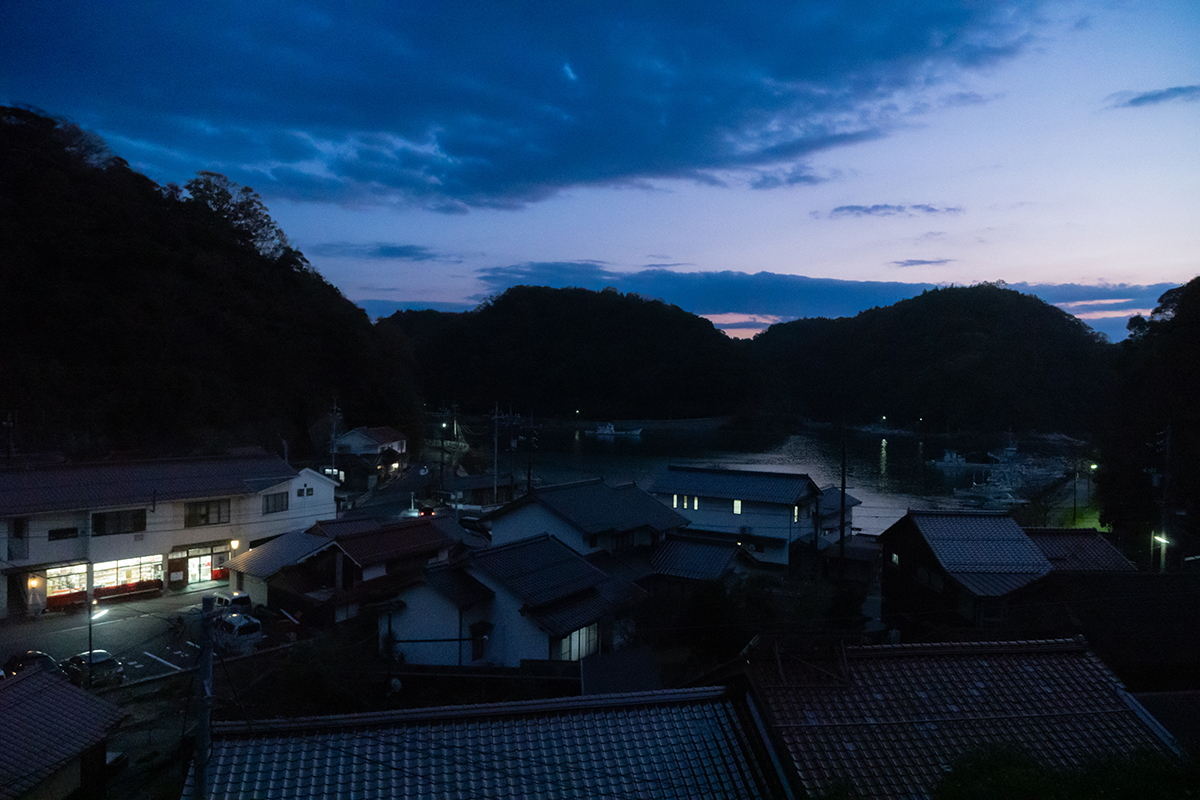
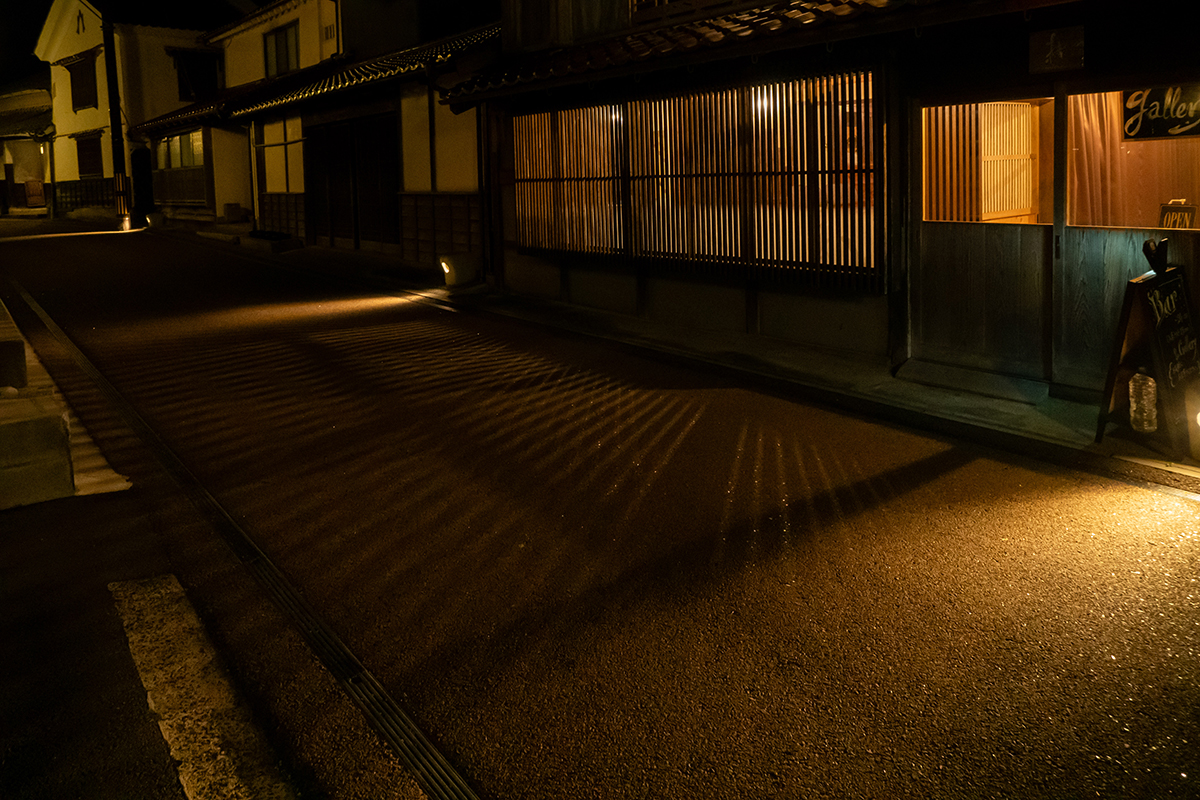
After the sun had completely set, we climbed down from the hill and surveyed the streets of Yunotsumachi at night. Designed streetlights and bollard lights are evenly spaced along the street, nestled against the town houses. The color temperature of the street lights is 3000K and the brightness of the road surface is about from 2lx to 8lx. The vertical light and light leaking from the flat-roofed townhouses also provided a moderate brightness to the entire street. The light leaking from the townhouses was very gentle and reassuring in an environment where the complete darkness is just beyond the roofs of the buildings. The roofs of many of the houses in this area are made of local “Sekishu-Kawara Tiles,” which are exquisitely colored and reflect the light at night, contributing to the atmosphere of the street.
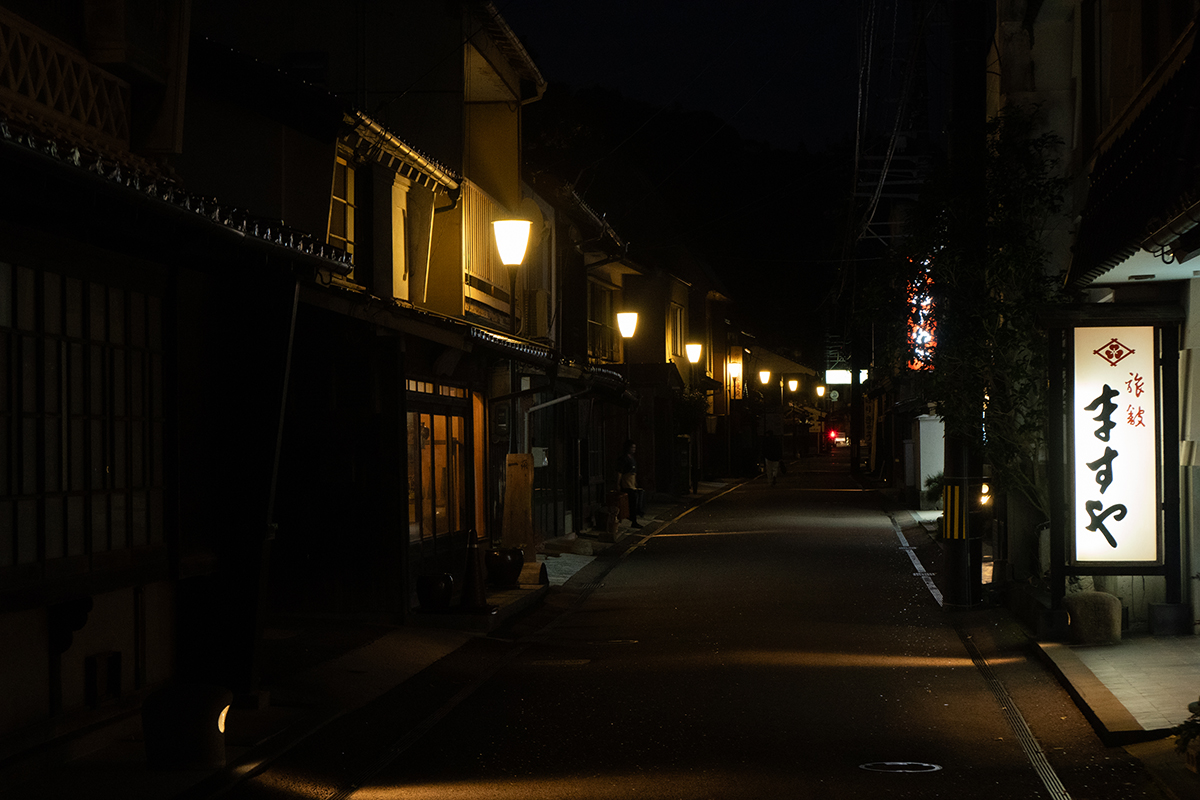
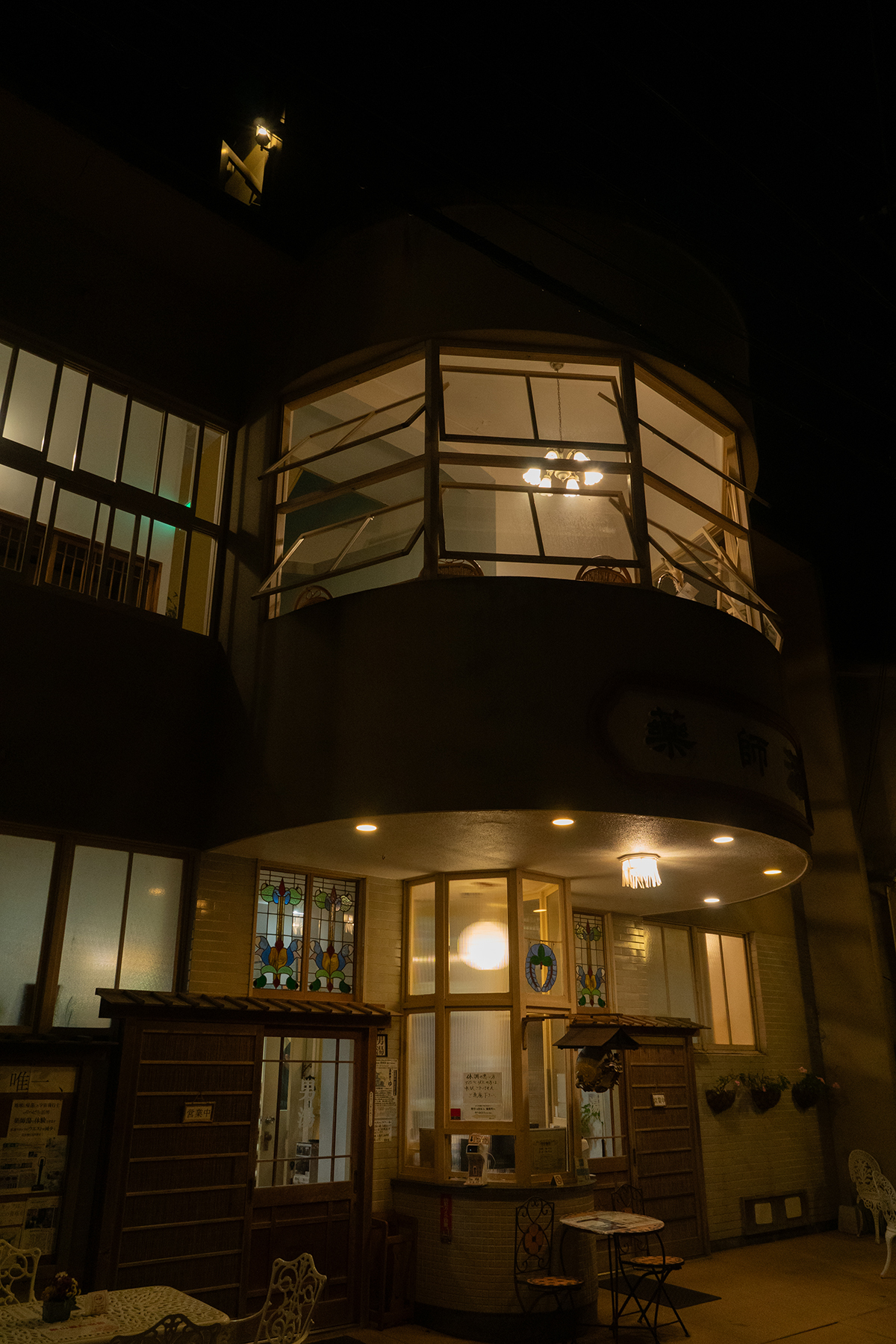
Continuing down the street, we found a brightly lit spot on a mountain rock wall that looked like a pool of light. Yunotsu is a hot spring resort, but it has also long been known as a quarry for “Fukumitsuishi,” a specialty of Shimane Prefecture. I guess that this illuminated rock wall must have been a quarry that is no longer in use, since there are traces of stonecutters. There are no signs around the spotlight explaining its purpose of the lighting, and it is assumed that someone in the town intentionally installed the spotlight. It was subtle but we were really impressed an attempt to convey the charm of the city by illuminating the rock walls, the history of the city, with small lights. We were so warmed by this clear display of respect for our ancestral culture that we went to bed without bathing in the local hot springs. Walking through the streets of Yunotsu, we realized that good old Japanese scenery can coexist with the recent shift to LEDs. I hope that the city will continue to preserve its unique streetscape without being overly designed. As the urbanization of rural areas continues, more and more towns are becoming aware of the importance of their residents’ own culture, and if lighting can enhance the atmosphere of a town as well as it did in Yunotsu, we could not be happier. (Masashi Kurobe)
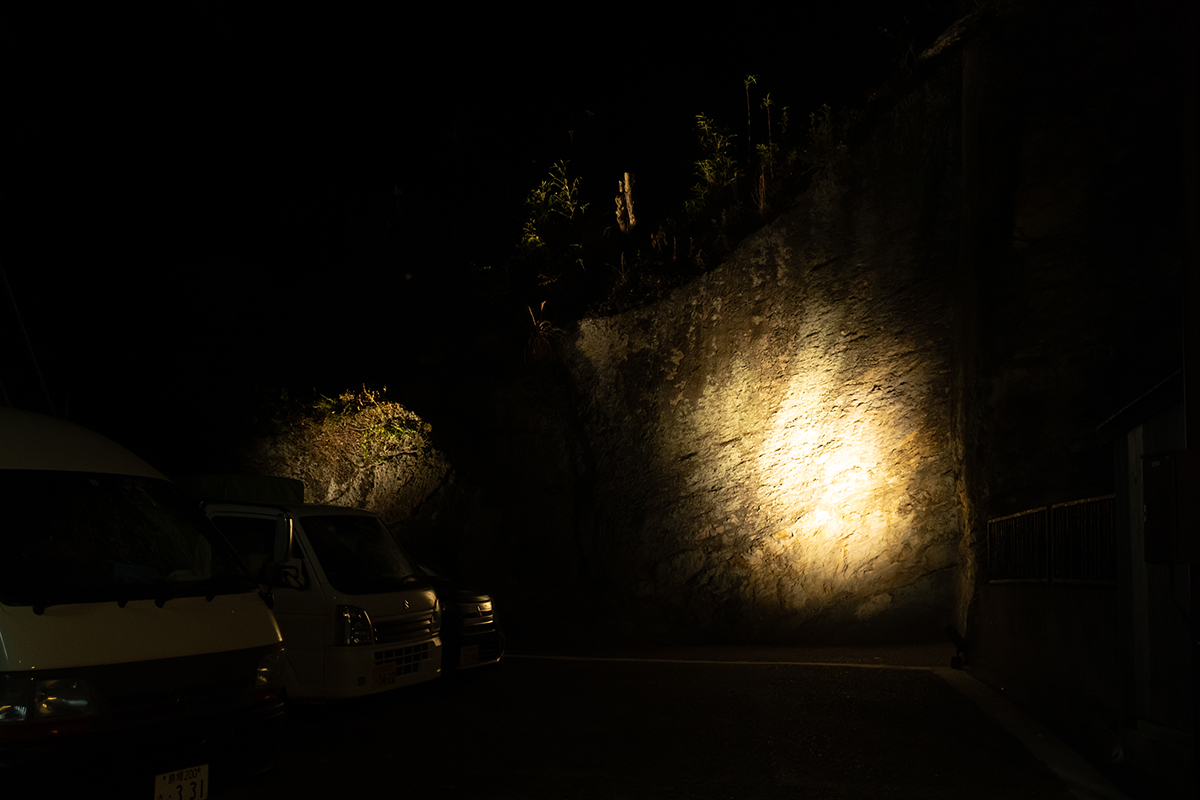
■Sunrise Izumo
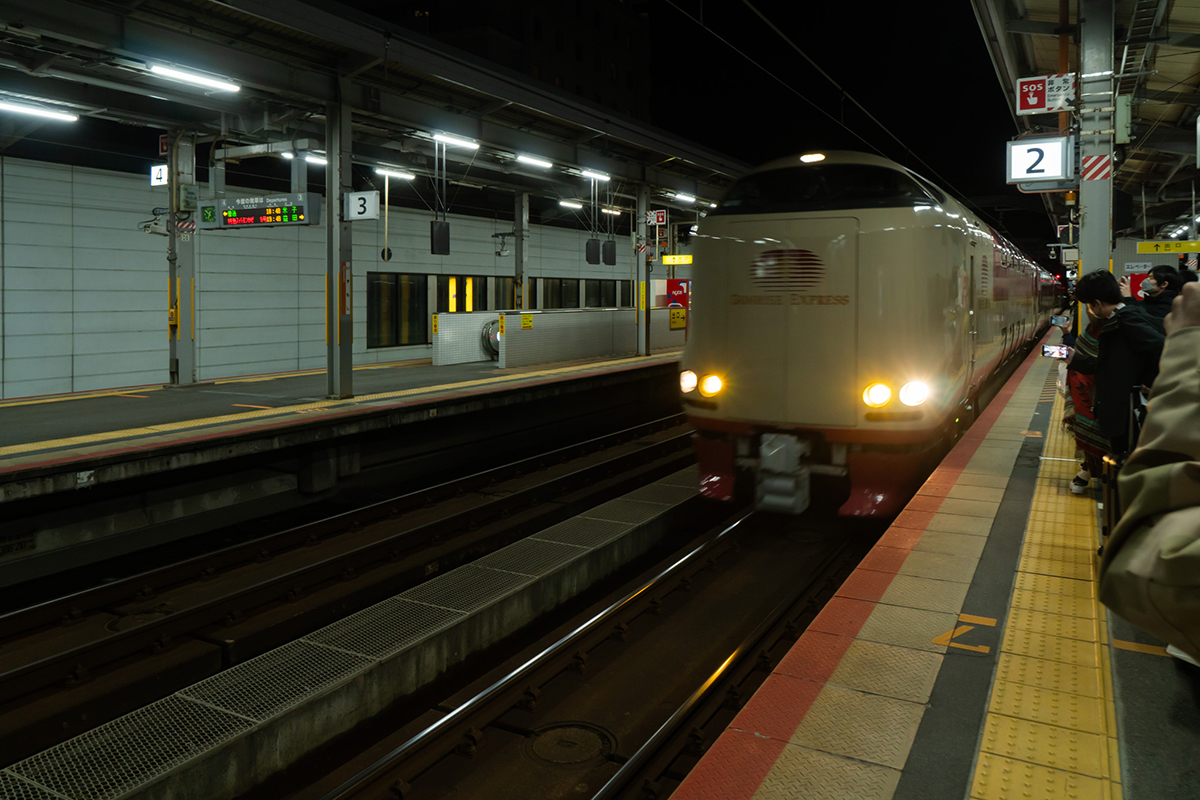
A cold seasonal wind peculiar to the Sea of Japan was blowing. We jumped on the “Sunrise Izumo,” Japan’s only overnight sleeper express, which was the other purpose of our research. A quick look inside the train revealed that the interior was uniformly decorated with rounded shapes and woody materials, and the 2700-3000K light bulbs took advantage of them and created a warm atmosphere.
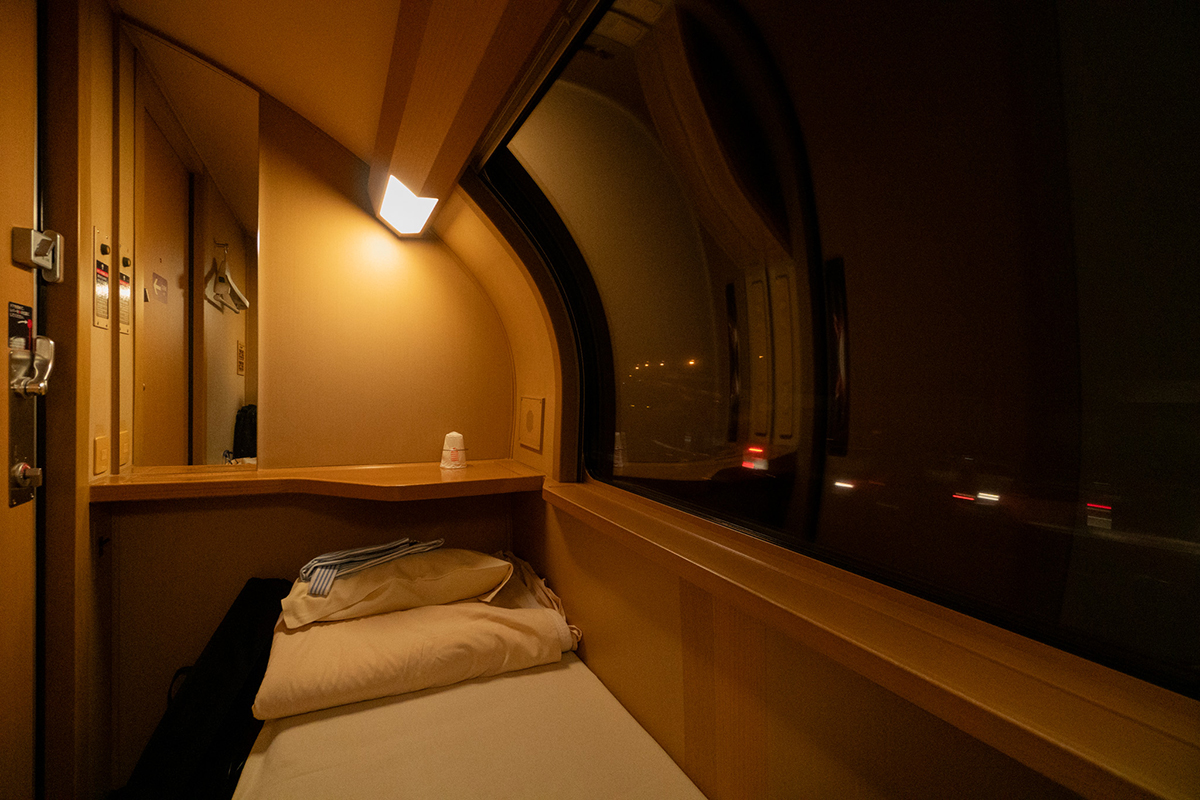
In the corridor with guest rooms on both sides, ceiling-mounted lights in front of the doors were alternately placed on the left and right sides of the corridor. The floor illumination was about 25lx. The corridor was narrow and the ceiling and walls were glossy. They made the room feel full of light and very bright. In the corridor with guest rooms on only one side, the ceiling was softly illuminated by alternating embedded ceiling lights and indirect ceiling lights. While this was sufficient as functional lighting to ensure the brightness of the sleeping quarters of a sleeper train, I felt that a lighting design with a greater degree of contrast between light and dark would be better for the hospitality space. The single occupancy room I stayed had 2 types of lights: an interior light and a night light. When the room light is turned on, 2 lights, one at the head and the other at the foot of the bed, are lit, and when the night light is turned on, only one light at the head is lit. When both lights were turned off, the lights inside and outside the cabin were reversed, and the city lights appeared through the car window. With the night light, the light source was above the head, so it wasn’t a comfortable light environment for sleeping at all. On the other hand, when both lights were turned off, the room was moderately dark, and we were able to watch the various moving lights reflected in the window without thinking, creating a comfortable space.
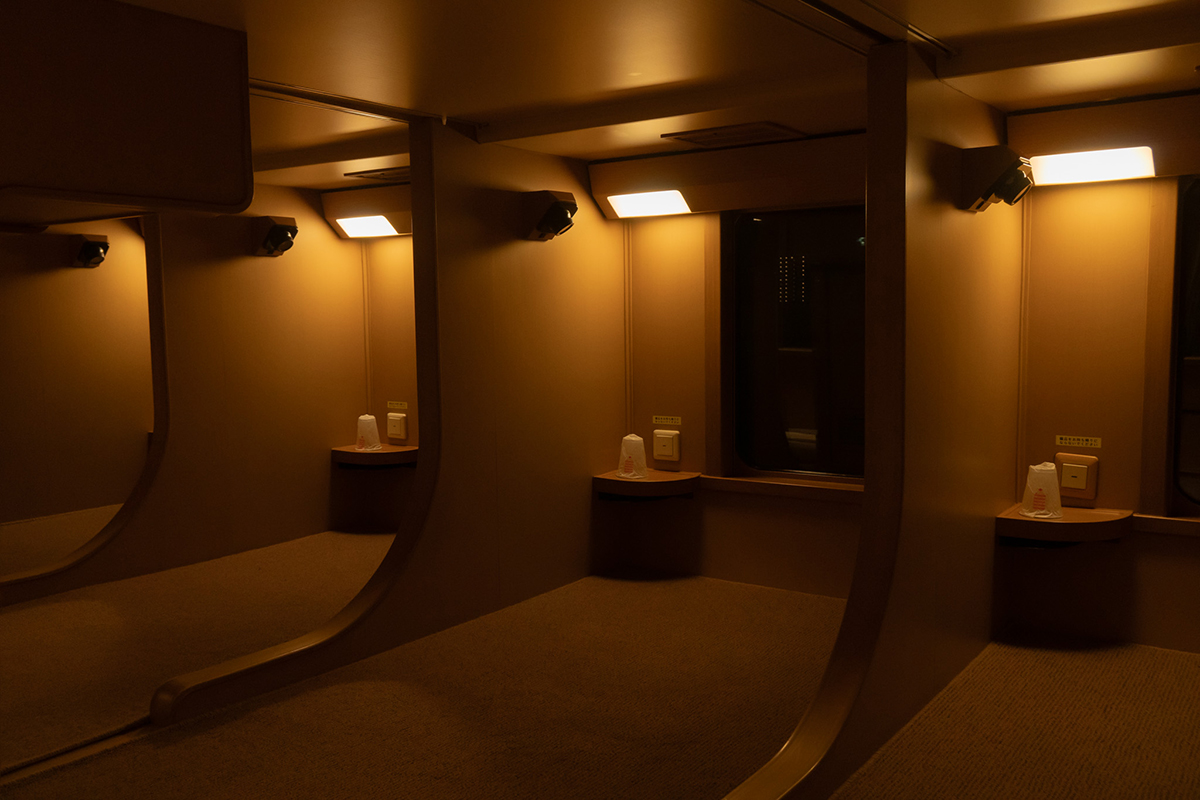
■Conclusion In this survey of two areas, Izumo and Iwami in Shimane Prefecture, we did not encounter many light villains. I think this is because there were many cultural lights that have been preserved with long history, such as those seen in the “Kamimukae Ritual” and lights with a will to preserve cultural values, such as those seen in the “Iwami Ginzan Silver Mine” and “Yunotsumachi town”. I was able to experience the lighting culture that has been handed down along with the culture. (Yuta Shibata) There was still a lot of darkness in Izumo, and I felt the presence of the gods in the darkness especially it was during the period of the Kamimukae. The light of the city of Izumo definitely contributed to the enhancement of cultural values. I believe this is the result of the sensitivity to light that has taken root among the people as a customary rather than a commercial phenomenon. I felt that this sensitivity is one of Izumo’s precious cultural values that should be passed on to the next generation.(Masashi Kurobe)





